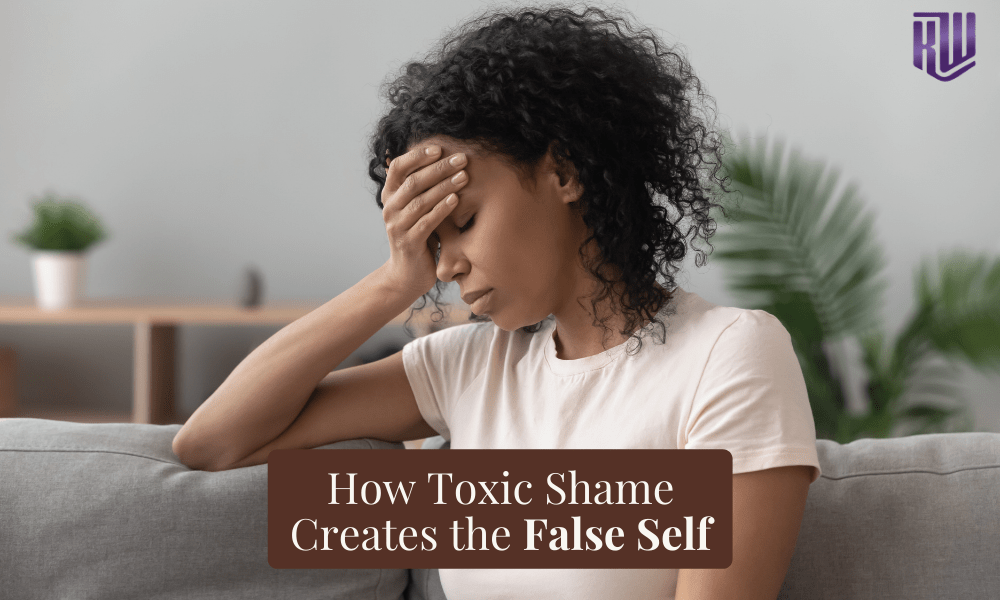In today’s Best Day Blog and accompanying video, I will help you transform the emotional misery of toxic shame into Emotional Authenticity by bringing awareness as to how toxic shame creates the false self.
Toxic shame is an internal separation from ourselves. It’s where the false self is born, and it is the third stage of The Worst Day Cycle.
How is Toxic Shame Created?
It starts with our parents. Not because they were bad people, but because all parents are perfectly imperfect and human. Because of this, parents can communicate with their children in a way that creates toxic shame by not being able to differentiate between the child doing something imperfectly or being something imperfect. As such, we grow up believing that if we make a mistake, we as a person are the mistake.
Toxic Shame Creates ‘doers,’ not ‘be-ers
Toxic shame makes us ‘doers’ and not ‘be-ers’ because we inadvertently learn that who we are ‘being’ is bad, rather than just being that what we were doing was imperfect. Therefore the doing becomes a false self. We only know how to ‘do’ because to ‘be’ us was a mistake.
We must learn to just ‘be’ because underneath the ‘doing’ resides the anger and rage, and it wants to come out. When we can be, the rage is released, and healing occurs.
Shame expert John Bradshaw describes it this way:
‘Toxic shame is a rupture of the authentic self that necessitates developing a false self. With a false self, intimacy is impossible. In toxic shame, the self becomes an object of its own contempt, an object that can’t be trusted. A toxically shamed person is divided within himself and must create a false self cover-up to hide his sense of being flawed and defective. You cannot offer yourself to another person if you do not know who you really are. A shame-based person will guard against exposing his inner self to others, but more significantly, he will guard against exposing himself to himself.’
Toxic Shame leads to Codependency.
The second sign of toxic shame is codependency. Most toxic shame is given to us when we are much too young to be aware of it before age 3. It’s not just what our parents did to us. It’s also what our parents didn’t do when they weren’t emotionally available. Often, when our parents couldn’t provide what we needed at the time we needed it, we were left feeling an emotion – sadness, pain, anger – and this is where codependence is formed. Our parents taught us to believe that others make us feel a certain way. In reality, no one can make us feel anything. We are always in control of how we feel and can make a choice.
Additionally, our parents do not teach us how to discover our morals, values, needs, wants, negotiables, and non-negotiables. Instead, they require us to adopt theirs.
Because of this, we are all chameleon-like in our adult lives, taking on the traits of others and being dependent on them to define who we are.
Toxic Shame Creates Self-abandonment
When we become a chameleon, we lose who we are. One of the main ways we abandon ourselves is through toxic relationships. Toxic relationships happen because we experience these sorts of relationships in our childhood – we all remake the relationships we see in childhood because we are stuck in toxic shame.
Another way we self-abandon is through addiction. Work, food, alcohol, drugs, pot, pills, sex, porn, gambling, shopping, tv, social media, sugar – they all have their core in shame. Many addictions have now been normalized in society – alcohol and overeating are two of the most common.
Toxic Shame Creates Blame
We cannot take responsibility and, therefore, we blame instead. We blame how we feel on others – ‘You made me think, feel or do…’, which often happens in relationships. We also blame ourselves a lot for the shame. Phrases indicating toxic shame are ‘should’ and ‘could’ – ‘I should have known’ or ‘I could have done this instead.’ This simply isn’t true – in every moment, you are doing the best you can with the knowledge you have, and as you gain more knowledge, you can make different decisions – you are not to blame.
When you blame yourself, that is the child within you hearing your parent’s voice saying, ‘You could/should have done better. You are to blame!’. Please recognize that this is your inner child’s voice. Listen to it, and release the blame.
Toxic Shame Requires Secrecy
We hide who we are. Brene Brown talks about this and likens shame to how a virus grows. When you put a disease or virus in a petri dish, put it in the dark, and it consumes the dish. However, when you bring it back into the light, it dissolves – the light heals it. This is the same with your shame – keeping it in the dark, it grows and multiplies behind a layer of secrecy. But, if you can bring it to the light and share how you feel, you can heal.
We even hide our genuine emotions by labeling them with other emotions – we call fear, anger, we call fear stress! Fear is always one of three things: the fear of rejection, inadequacy, or powerlessness. So, whenever you see someone who is angry, you see one of those three fears coming through them.
Many of us also simply feel numb – in fact, studies show that up to 70% of people don’t know what they feel and recall feelings of numbness. This numb feeling is simply a dissociation method because we cannot begin to deal with what we truly feel, so we’ve checked out and left our bodies.
When we are in our toxic shame, we cannot be in relationships because we always show up as the toxic shame-based self rather than our authentic self.
Solutions to Toxic Shame
This isn’t a quick solution. However, the following will help:
My book ‘Your Journey to Success’ will introduce you to The Worst Day Cycle and how to heal from it so you can start living as your authentic self.
Go to my YouTube channel and visit my Worst Day Cycle playlist. Look for five videos titled Reclaim your authentic self by becoming trauma-informed. In particular, video four talks explicitly about shame.
Also, I have a video called ‘7 Steps to Heal Toxic Shame on my YouTube channel, which will go even more in-depth into this topic. As well as this, I have a codependence recovery playlist that will help you to discover your morals and values, needs and wants, and negotiables and non-negotiables.
I would also encourage you to sign up for my free masterclass, which will give you the basics of turning emotional misery into Emotional Authenticity. It’s called ‘Your Journey to Emotional Authenticity’ and is available at www.thegreatnessu.com.
Additional solutions:
1- My book, Your Journey To Success
2– My Complete Emotional Authenticity Method
3– My Perfectly Imperfect Private Group
To learn more, watch this:





